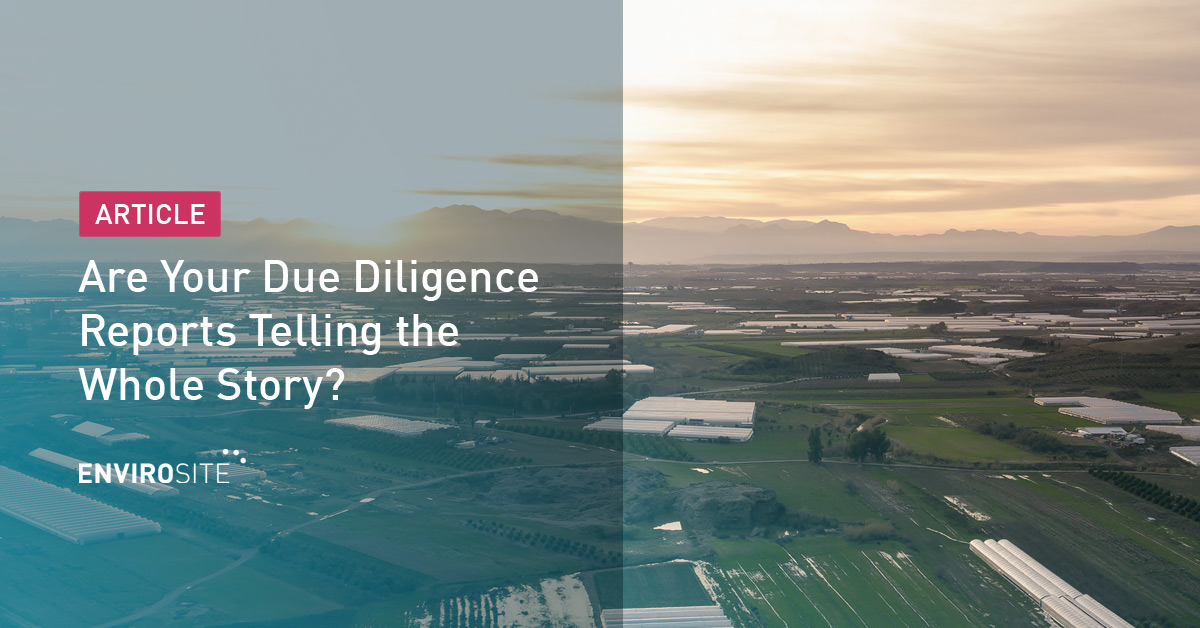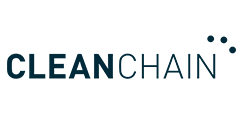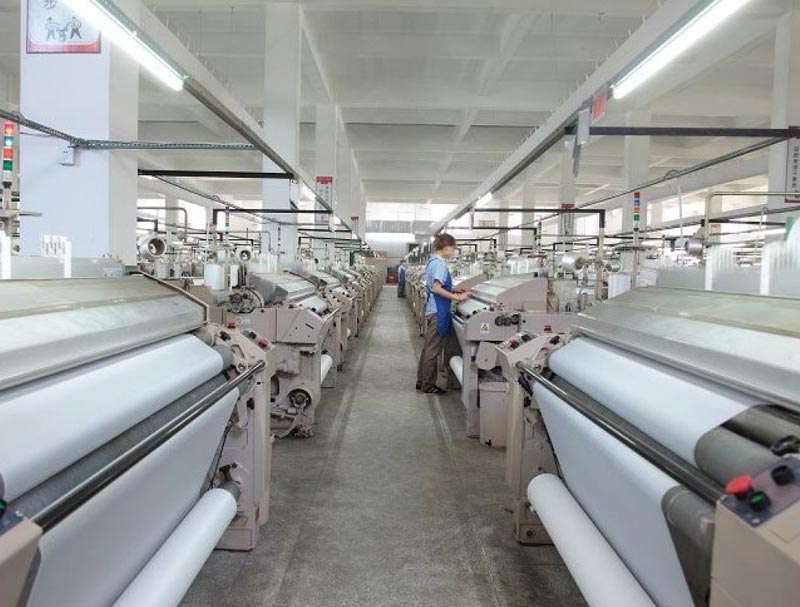Are Your Due Diligence Reports Telling the Whole Story?
Article
Is due diligence doing enough to ensure deals close with confidence rather than crossed fingers?
Currently, environmental due diligence is a safeguard. It’s how developers, legal teams, and owners protect future use, long-term value, and operational certainty. But somewhere along the way, it became complacent. In many transactions, the process is treated as procedural, necessary but rarely examined. The form has outpaced function.
That’s the tension. While the structure has remained familiar, the risk environment around it has changed entirely.
The science is moving faster. PFAS is no longer background noise. Vapor intrusion can shift a deal’s viability. Groundwater pathways are becoming less predictable, less contained. These are not outliers. They are forefront realities, shaping liability and influencing how assets are priced, insured, and carried.
The question isn’t whether due diligence still matters. It’s whether the process, as it currently exists, is asking the right questions. And whether the information behind it is strong enough to support the answers.
Because due diligence, at its core, relies on one thing: Data. Without clean, credible, well-structured information, the process becomes fragile. Fragile systems tend to hide their failures until it’s too late.
For many stakeholders, a Phase I still signals completion. It is often treated as the final requirement. But for those who carry the risk long after the transaction, including owners-operators, developers, and legal teams, the report doesn’t close a file. It opens one. Not because it’s wrong, but because it wasn’t built to keep up with what risk has become.
A site can appear clean and still carry unresolved histories. A property can pass today’s standards and fail tomorrow’s expectations. These are not rare exceptions. They are the result of a system that has not adapted to the reality professionals are working in now.
The pace of regulation has accelerated. Standards have become more exacting. Contaminants once considered irrelevant are now central to liability. And yet, the timelines have not expanded. If anything, they have contracted. Consultants are expected to deliver more insight, under greater pressure, with less room for ambiguity.
This is where due diligence becomes fragile. Not because of what it finds, but because of what it cannot afford to explore.
Developers see this in construction delays and remediation surprises. Legal teams see it in disputes that hinge on what was known, what was assumed, and what should have been questioned. Environmental professionals, often working against the clock, see it in the uncomfortable space between what they understand and what they are allowed to call out.
So what is due diligence supposed to be doing in 2025?
If the goal is to protect liability at the moment of transaction, it often succeeds. The report gets issued. The conditions are documented. The client moves forward. But the process needs to adapt to an environment that does not stand still. Risk does not wait for paperwork to catch up. It shifts. It redefines itself. Due diligence needs to be built to meet it in motion, not just at a fixed point in time.
A report might meet technical standards but fail to mention a substance now under active review. A site might be historically compliant and still fall under new scrutiny because groundwater modeling has shifted. These are not what-ifs. They are patterns.
And if the objective is limited to producing something that satisfies a transaction in the moment, then yes, the job is technically done. But what is sufficient for today may prove incomplete tomorrow. What clears review this year could raise new flags the next. Due diligence does not need to predict the future, but it should be designed with the understanding that the future is coming anyway.
The role of the Environmental Professional is changing. And with that comes pressure.
They are being asked to anticipate conditions that have not yet been regulated. To speak with certainty on exposures that may not be defined for another year. To weigh legal outcomes before the courts have spoken. And still, to deliver something that feels clear enough to support a business decision.
This is not just a challenge. It is a structural mismatch.
Clients want speed. Regulators want specificity. EPs are asked to hold both. The system gives them very few tools to do it.
Technology promises to help. But efficiency is not clarity.
Modern platforms deliver reports faster. They automate workflows. They give the process a clean interface. But the fundamental questions, such as what is surfaced, what is omitted, and what gets flagged, are still shaped by assumptions that have not kept pace.
Preset filters, templated logic, and automated flagging are defining what gets seen and what does not. That influence is not always visible to the person receiving the report. But it shapes perception. When the structure of a tool starts dictating which risks are highlighted and which are hidden, it stops being a neutral delivery mechanism. It becomes part of the decision-making equation.
This is where artificial intelligence begins to enter the conversation. Not as a solution to replace professional insight, but as a tool that amplifies speed and reach. AI can draft. It can sort. It can help identify patterns across large datasets. But it cannot replace the judgment of someone who understands how regulatory changes land in practice, how historical use informs liability, and how small details become legal consequences.
The real risk is not that AI will miscalculate. It is that people will accept what it delivers without asking whether it is complete.
What due diligence needs right now is not more speed. It is better structure. It is smarter defaults. It is tools that encourage sharp thinking rather than flatten it. What professionals need is not a louder system. It is one that helps them stay sharp, stay skeptical, and stay ahead.
The cost of getting it wrong is real. It lives in project overruns. In lawsuits. In reputational damage. In environmental conditions that should have been flagged but were not.
And the burden for that fallout does not fall on the platform. It falls on the people.
So where do we start?
With the data itself. The integrity of environmental due diligence rests on the quality of the information beneath it. Too often, that foundation is fractured. Records are incomplete. Sources are outdated. Critical context is scattered across systems or buried inside formats too rigid to respond to changing conditions.
If we want better outcomes, we have to begin by strengthening the inputs. That means putting real investment into the quality, traceability, and usability of environmental data. Not just more of it. Better versions of it. Structured in ways that help professionals see what matters sooner and act with confidence when it counts.
This is the shift that needs to happen. And it is already underway.
We Watched. We Built. Now We Grow.
Over the past year, we have paid attention. We have studied these pressure points. We listened to what is missing. And we have made the decision to evolve.
Now, under the leadership of President Mark Mattei, we have entered a new phase. We are investing in the integrity of our data. We are building systems that reflect the way environmental professionals actually work. And we are elevating the people who help shape the decisions that follow.
This is not growth for its own sake. It is targeted. It is built to solve. It is designed to support smarter decisions because that is what the moment calls for.
We believe that good data leads to good decisions. And we believe that environmental due diligence is ready for a new chapter.
We are building for that future.
And we are just getting started.
Did you know?If you’re looking to optimize your resilience and sustainability efforts, tools like Envirosite’s Atlas and Property Risk Map provide comprehensive solutions for discovering, evaluating, and monitoring environmental risks associated with property and site development. By leveraging these tools, companies can gain actionable insights into potential environmental liabilities, ensuring that their projects are not only compliant but also aligned with best practices of environmental stewardship. Learn More >> |









